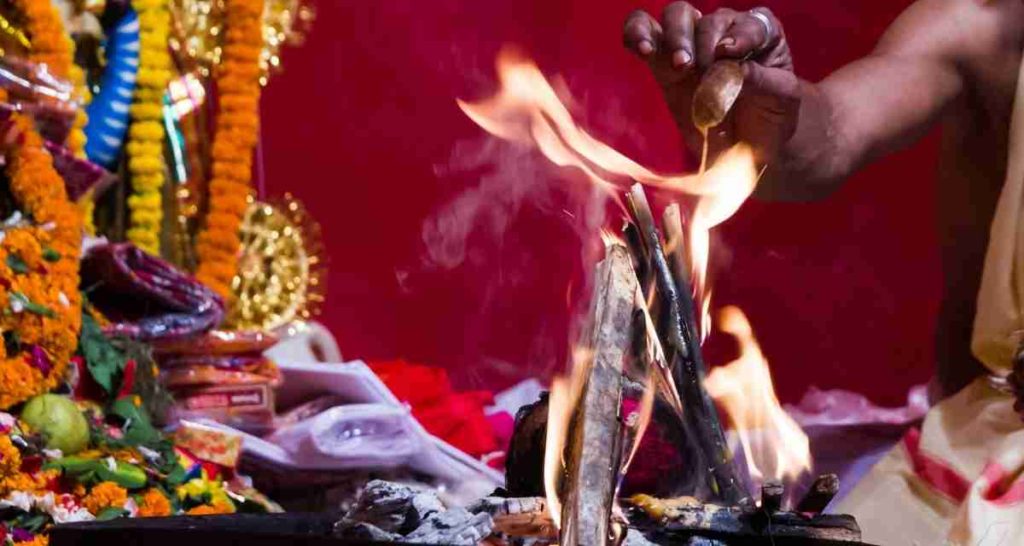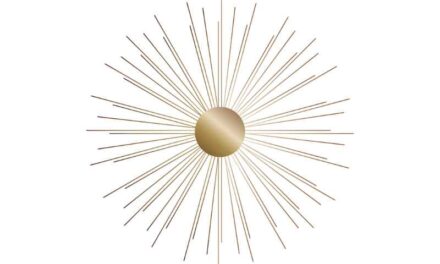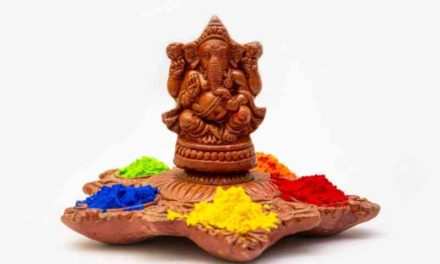As a religious phrase, Sanatana Dharma refers to the original religious philosophy of the peoples of modern-day India and the rest of the Indian subcontinent. It is a blend of several spiritual traditions indigenous to the area and, unlike other faiths, lacks a clearly defined set of beliefs. Giving the follower the option of having his own set of beliefs.
While it is largely believed that Sanatana Dharma is the world’s oldest religion, no recorded historical individual is credited with its founding. Hinduism derives from a variety of regional tribal beliefs and is most likely a synthesis of them. According to historians, Hinduism dates all the way back to at least 5,000 years.
At one point, it was thought that the Aryans introduced the fundamental beliefs of Hinduism to India when they conquered the Indus Valley civilization and settled along the banks of the Indus river about 1600 BCE.
What precisely is Sanatana Dharma?
The Sanatana Dharma is defined as follows:
That which has neither beginning nor end is referred to as Sanatana (the Eternal). Timeless
Dharma is often regarded as either a moral obligation or a religious obligation, both of which are shallow and superficial conceptions.
The term “universal principles” is a better translation.
As a result, Sanatana Dharma may be defined as a collection of Universal Timeless Principles.
It is the collection of Guidelines that guide the person on the road of self-discovery that is known as Sanatana Dharma. These recommendations are not intended to be binding or dogmatic. They are just recommendations.
Sanatana Dharma is not about blind trust; rather, it is about questioning and finding what one already knows both inside and outside
Humanism serves as the foundation and substance of Sanatana Dharma’s philosophy, which is reliant on it. It is not looking for obedience, but rather for enlightened self-exploration and discovery.
Many academics think that Sanatana Dharma formed among the communities of people who lived in the Indus Valley area far before the Iron Age the earliest artifacts of which date to around 2000 BCE.
Other researchers combine the two views, arguing that Hinduism’s central doctrines arose from local ceremonies and practices but were impacted by other sources.
We know very little about ancient Hinduism or when it all began. Because Hindus did not believe in linear time, our scriptures make no reference to a real genesis.
The concept of Hinduism as a religion is a relatively recent creation of the British, maybe a few centuries ago. Hinduism is less a religion than it is a way of life, a culture that is practiced across the Indian Subcontinent. The True Sanatana Dharma existed from the start of human evolution.
To ascertain the source, we must first perform etymological surgery on the term ‘Hindu-ism.’ Let us begin with the simple part: ‘-ism’ refers to the beliefs and philosophy of a certain group of people, in this instance Hindus.
The name ‘Hindoo’ was used by Arabs and subsequently by Europeans to refer to the many peoples who lived beyond the banks of the Indus/Hind/Sindh rivers. Much like individuals we refer to as Africans on the African continent, regardless of their religious beliefs, which gradually consolidates into a racist/ethnic identity.
Similarly, the word ‘Hindoo’ refers only to the residents of the geographical region east of the river Hind. Only after India’s colonization did the British unify the hundreds of indigenous peoples, their kingdoms, and ways of life under the umbrella of Hindoo.
Although the architectural remains of these vast urban complexes lack obvious religious iconography, archaeologists have discovered several fascinating artifacts, like an abundance of seals representing bulls, including a few unique specimens displaying individuals reclining in yogic poses; terracotta female figures suggesting fecundity; and miniature anthropomorphic stone and bronze sculptures.
Additionally, prototypes of stone lingas have been discovered at these locations (phallic emblems of the Hindu god Shiva). Later literary sources suggest that this area’s indigenous peoples practiced linga worship.
Recent ideas suggest that Indus Valley peoples moved to India’s Gangetic area and assimilated with local civilizations after the collapse of civilization in the Indus Valley. From West Asia, a distinct group of Indo-European speakers came to the subcontinent. These peoples carried ceremonial life with them, including priest-presided fire offerings and a collection of hymns and poetry collectively known as the Vedas.
Indigenous beliefs among the pre-Vedic peoples of India’s subcontinent included a range of local customs centered on agricultural fertility cults and indigenous nature spirits. The Vedic texts make reference to image worship, tutelary divinities, and the phallus.
Sanatana Dharma is said to have originated in nature and ancestral devotion. It was India’s original religion. As traditional types of worship of Nature and ancestors, animal and vegetable sacrifices, food offerings, and flower worship are described. The original race, who we refer to as Dravidians, worshiped mostly rivers, hills, and trees.
During the emergence of Vedic Hinduism in the North-Western Indian provinces, objects such as the Linga, the Star, and the Altar arose.
To return to your question, Eastern spirituality, in contrast to Western Abrahamic faiths, is less text-based and more practice-oriented. Thus, while tracing the origins of Hinduism, one must consider the origins of many of these distinctive cultural characteristics.
This is the Sanatana Dharma that existed prior to the Vedas’ popularity (about 5000 years ago). The Indus Valley’s earliest significant civilization (that has been discovered so far) employs seals of “Pashupati” – master of the animals. The civilization’s writing has not been deciphered and remains a mystery. The Meaning of the Term “Hindu“
Hinduism is derived from the Indus River, which runs across northern India. The river was originally named the Sindhu, referring to the area as Hindustan and its people as Hindus.
The name Hindu was initially employed by the Persians in the sixth century BCE. Initially, Hinduism was primarily a cultural and geographical designation; it was only later that it was extended to the Hindus’ religious rituals. Hinduism as a name for a collection of religious ideas originally appears in Chinese literature from the seventh century CE.
Sanatana Dharma Evolutionary Stages
Sanatana Dharma developed extremely gradually, developing from ancient faiths on the subcontinent and the Vedic religion of the Indo-Aryan civilization, which lasted around 1500–500 BCE.
According to experts, Hinduism evolved through three distinct periods: the ancient era (3000 BCE–500 CE), the medieval period (500–1500 CE), and the contemporary period (after 1500 CE) (1500 to present).
Sanatana Dharma Early History
3000-1600 BCE: The first Hindu rituals date from circa 2500 BCE, with the establishment of the Indus Valley civilization in northern India.
1600-1200 BCE: Around 1600 BCE, the Aryans are claimed to enter southern Asia, exerting a lasting effect on Hinduism.
1500-1200 BCE: Around 1500 BCE, the first Vedas, the earliest written texts, are created.
1200-900 BCE: The early Vedic era, saw the development of Hinduism’s central doctrines. Around 1200 BCE, the first Upanishads were composed.
900–600 BCE: The late Vedic era, which saw the birth of the Brahminical religion, placed a premium on ceremonial worship and social responsibilities. The later Upanishads are considered to have originated during this period, giving rise to the notions of karma, rebirth, and moksha (release from Samsara).
Between 500 BCE and 1000 CE, the Puranas were written, giving birth to notions of deities like the trinity of Brahma, Vishnu, and Shiva, as well as their feminine manifestations, or Devis. During this period, the germs of the great epics Ramayana and Mahabharata began to develop.
Buddhism and Jainism become prominent religious offshoots of Hinduism in India around the fifth century BCE.
Alexander invades western India in the fourth century BCE; Chandragupta Maurya establishes the Mauryan dynasty; Artha Shastra is composed.
Ashoka the Great conquers the majority of South Asia in the third century BCE. According to some experts, the Bhagavad Gita may have been composed around this time period.
The Sunga dynasty is created in the second century BCE.
The Vikrama Era, named after Vikramaditya Maurya, began in the first century BCE. The Manava Dharma Sashtra’s (or Manu’s Laws) composition.
The Ramayana is finished in the second century CE.
Hinduism starts a steady expansion across Southeast Asia in the third century CE.
The fourth to sixth centuries CE are often recognized as Hinduism’s golden period, with considerable standardization of the Indian legal system, centralized administration, and universal literacy. The Mahabharata’s composition is complete. Later in this time, devotional Hinduism began to grow in popularity, in which worshippers devote themselves to certain deities. In India, devotional Hinduism began to erode Buddhism.
From the seventh through the twelfth centuries CE, Hinduism continues to expand across Southeast Asia, even as far as Borneo. However, foreign incursions into India erode Hinduism’s power in its homeland, since some Hindus are brutally converted or enslaved. Hinduism thereafter enters a protracted era of discord.
From the 12th through the 16th centuries CE, India was a volatile area of mixed influence by the Hindus. However, substantial unity of Hindu doctrine and practice occurred during this period.
17th century CE: The Marathas, a Hindu military tribe, effectively overthrow foreign monarchs but ultimately clashed with European imperial aspirations. However, the Maratha kingdom laid the groundwork for Hinduism’s ultimate renaissance as the primary force in Indian nationalism.
Our era is associated with Vaivasvata Manu, the seventh Manu in a long line of creation. In Indian languages, the name ‘Manushya’ or ‘Manav’ is said to have derived from the word Manu, the primal cosmic Person. This is not the same Manu as the author of Manu Smriti. As indicated before, the Manu here refers to God’s First Born, who is also the Creator.
Because God is impersonal, unknowable, and nameless (i.e. devoid of characteristics), He does not create in His unmanifest condition, as He is a pure brightness beyond ideas, motions, and qualities. Thus, God appears as a Cosmic Person in order to create the human world.
Thus, God appears as a Cosmic Person in order to create the human world. The Hindu scriptures adequately and logically explain this process of creation. Purusha, Hiranya Garbha, Prajapati, and Manu are all names given to this Cosmic Person in the Vedas and Upanishads.
Puranic Hinduism accords Creator status to its ishta devatas – such as Siva, Vishnu, and Brahma – according to their respective sects’ beliefs. Likewise, Abrahamic faiths refer to Him as the Father in the Heavens. However, according to Sanatana Dharma, the Creator is Manu, and the cosmic time is measured in terms of Manvantara.
According to the insights received via Navajyoti Sri Karunakara Guru from the Supreme Almighty in 1973, a fundamental mistake seems to have occurred in the timeless tradition of Sanatana Dharma. These are the revelations:
As a result of this misunderstanding, Brahman cursed humanity, and knowledge of the Manus was lost to later eras.
Humans breach God’s Will. In the texts – Vedas and Upanishads, epics, and mythology, for example – interpolations occur.
The Vedic priests (Vaidikas) preach a system of ceremonial worship that disregards the jnana component of the Vedas (Jnana Kanda).
Santana Dharma suffers another setback as a result of its division into several sects based on Saiva, Sakteya, and Vaishnava, each of which claims dominance over the others.
Greedy priests convert the Vedic notion of ‘Varna’ into a caste system. People are classified according to their birth dates.
The spiritual guidance of the sages and gurus is disregarded (as defined in the Manu Parampara). A system of worship based on the propitiation of Devi-Devas and Trimurty acquires power, and priests take on the role of authority – the guardian of dharma.
Santana Dharma’s demise is complete. India relinquishes its spiritual and economic leadership roles.
If despite the efforts of great avatars like Krishna, as well as several other sages, Santana Dharma continues to suffer in India, the spiritual nerve center of the universe, Brahman sends messengers and prophets in other regions of the world.
It has been revealed that from the beginning of this Kaliyuga, 2444 Gurus have been born in India and other areas of the globe for this reason.
God’s prophets and messengers are attacked on a subtle level by great evil forces, affecting these Guru lineages. Brahman’s Will remains unmet, and mankind suffers once again in the absence of authentic spiritual instruction from the Manu Parampara.
India will reclaim its lost greatness and unmatched spiritual leadership in the globe over the next 300 years.
India is the Vishwa Guru – the World’s Guru.
Navajyoti Sri Karunakara Guru said the following on India’s leading role in spirituality:
With respect to Yugadharma – the evolutionary notions of the four-dimensional ages – India have a rich and extensive treasury of knowledge that has been obtained through the observation of the four-dimensional eras of Satya, Treta, Dwapara, and Kali. However, the Indian people have been unable to profit from this for the purpose of acquiring the virtue of self-fulfillment for the soul.
The Santana Dharma is the vehicle through which the Supreme Law is transmitted to the world. As a result, this system contains the core of all faiths. A world in which an alternative to this manner cannot quickly emerge cannot exist. India is a nation of tremendous knowledge and magnificent civilizations that have developed across enormous epochs. As such, it should seek to build the ideal culture as decreed by the Almighty.
Additionally, although each religion is fundamentally a part of a greater whole, each has been ennobled on occasion by several great individuals through their self-sacrifice and effort, which has resulted in the development of distinct customs and traditions. Numerous similar traditions are found throughout Sanatana Dharma.
It is unlikely that any other religion has been enriched to this degree. To shape life in accordance with this Age – the Kali – theologians and all believers from many faiths must examine this Kali and its composite culture, the samskara stated in the Gita. This is a process that current and future generations must participate in.






